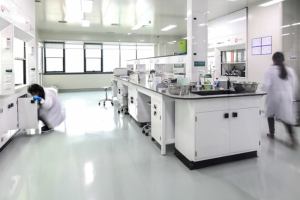Window closing to comply with CMS sprinkler requirement
Existing high-rise health care occupancies deemed by the Centers for Medicare & Medicaid Services (CMS) must be fully sprinklered by July 5, 2028. This includes high-rise buildings that contain health care and other types of occupancies.
While that date may sound so far off in the future to make it tomorrow’s issue, Leah Hummel, AIA, CHFM, CHC, CHOP, SASHE, senior associate director for regulatory affairs at the American Society for Health Care Engineering, explains that a project of this undertaking requires a significant investment of time, costs and personnel and can take months or even years to complete.
When CMS adopted the 2012 edition of the National Fire Protection Association’s NFPA 101®, Life Safety Code®, back in 2016, it came with sweeping changes that hospitals would need to comply with after a certain grace period. High-rise buildings containing health care occupancies being fully sprinklered within 12 years of CMS adopting the 2012 Life Safety Code was one of them.
The Life Safety Code defines high-rise buildings as “a building where the floor of an occupiable story is greater than 75 feet above the lowest level of fire department vehicle access.” Any building containing a health care occupancy rising to that category will want to look closely at Chapter 19 of the Life Safety Code, which references NFPA 13, Standard for the Installation of Sprinkler Systems, for implementation requirements as well as requirements for integration with the fire alarm system.
“The sprinkler system is not a standalone system,” Hummel says. “It has to be tied into the fire alarm system, and that’s where other requirements such as NFPA 72, National Fire Alarm and Signaling Code, come in. This project is not just as simple as hiring a sprinkler contractor. You also need to get your fire alarm vendors involved in the process to make those connections between the two.”
One example of an integration required between a sprinkler system and fire alarm system is the melting away of sprinkler head’s fusible link or glass bulb. Fusible links and glass bulbs are temperature rated, and in the case of a fire may not all melt away at the same rate to activate all sprinkler heads simultaneously. But when even a single sprinkler head is activated, it must also activate the fire alarm system.
Other factors to consider when transitioning to a fully sprinklered facility are the lead time it takes to secure equipment and infrastructure, such as piping and fixtures, and unexpected issues that may arise when opening up the ceilings of older facilities. Plans for installation will have to be reviewed by local authorities having jurisdiction, and Hummel says that can take up to nine months in some states. Once a building is fully sprinklered, it will also need to comply with ongoing inspection, testing and maintenance requirements specified in the Life Safety Code.
“A project like this is a major undertaking that will involve phasing, a shutdown of certain areas requiring interim life safety measures and infection control risk assessments,” Hummel says. “Transitioning into a fully sprinklered building is not an easy task, and this is something that many facilities will need to comply with in the next three years. The takeaway is that if you fall under this requirement and you are not sprinklered yet, you should start now.”



